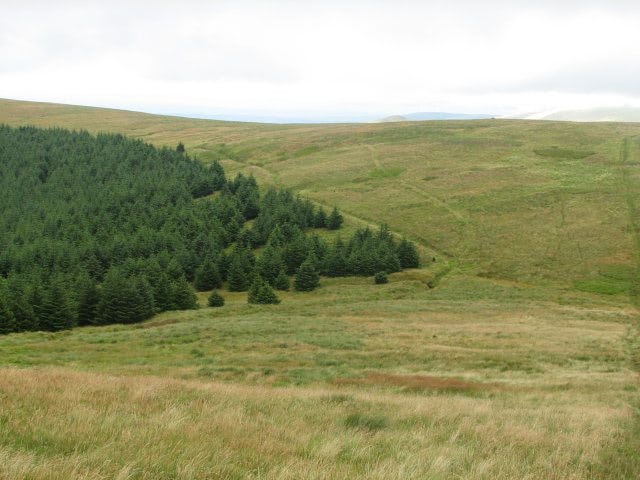Many people will have heard of the infamous swastika made up of larches that revealed itself every autumn in a forest outside Berlin. The trees, which turned yellow at the end of the year, stood out against the otherwise evergreen pine forest. The 60 sq yd Nazi symbol was only discovered after the fall of the Berlin Wall when the new German unified government ordered aerial surveys of state-owned land. While it may certainly be the most notorious, the German swastika plantation certainly isn’t the first time man has manipulated living trees for his own, often crude, purposes.
National Designs
Visitors to the Castelluccio region of Italy are usually surprised to see a strangely familiar shape looming from one of the mountains that enclose the vibrant valley. Planted by some unknown patriot, a small forest in the shape of Italy has established itself on the otherwise meadowed mountainside.
Although a small dose of nationalism can be expected from most rural folk, the plantations found along the rest of the mountain range – one in the shape of North America, one resembling Africa and another Australia – are perhaps more suited to a Benetton advert than the sedate Umbrian countryside.
Over in Kyrgyzstan, a mountain in Tash-Bashat, near the edge of the Himalayas, is also the unfortunate home to a living swastika. At more than 600 feet wide, the fir tree plantation is at least 60 years old. Rumoured to have been planted by German prisoners of war, the actual truth of the design is shrouded in mystery.
Nationalism also spawned another, less offensive forest design. Situated on the chalky South Downs that separate the UK city of Brighton from its northerly neighbours stands a plantation in the shape of a huge ‘V’ – planted to commemorate Queen Victoria’s diamond jubilee in 1887. When planted, it consisted of 3060 trees costing 12 pounds, 10 shillings and four pence.
Future forests
There are numerous plans in the pipeline to create symbolic forests. One charity, Tree-nation, is currently planting eight million trees in the shape of a heart in the middle of the Niger desert – a feat that will be viewable from space. The planters hope that the trees will help fight continued desertification and reduce poverty.
While some may be content to think of a design and let the trees do the rest, others take a more hands-on approach to manipulating their plantations. British sculptor, David Nash, planted a ring of 22 ash saplings in 1977 to create his ‘Ash Dome’ – a space he only intended being able to appreciate in the 21st century. Over the years, Nash worked the trees – grafting, pruning, moving and training – until they came to form the dome that is only now taking shape.
Another of his projects – ‘Divided Oaks’ – saw him subject some 600 trees to a process called ‘fletching’. ‘I simply pushed the very small trees over and put a stake to hold them,’ he says, ‘while for the larger ones I cut out a series of V-shapes, bent them over, and then wrapped them so the cambium layer could heal over. This really woke the trees up. My intervention actually stimulated them, and they were obliged to grow. They are now growing and curving up.’
Living material
Nash isn’t the only sculptor to take an interest in trees as a malleable living product. Based in Florida, Dan Ladd has been shaping and grafting trees into architectural and geometric forms for more than three decades.
One of his current projects involves eleven American Liberty Elm trees that are grafted next to each other to form a long hillside stair banister in Lincoln, Massachusetts. Another of his works, entitled ‘Three Arches’ is comprised of three pairs of 14-foot sycamore trees that are grafted to form arches framing various city views of Pittsburgh from Frank Curto Park.
American-born Richard Reames began sculpting with trees in the early 90’s, coining the word ‘arborsculpture’ in the process. Reames’ current projects include six plantings he intends to grow into habitable homes within the next decade. Always quick to see an opportunity for a future book, Reames has named the process ‘arbortecture’.
A potential future where furniture, homes and living spaces can be coaxed out of trees is undoubtedly an exciting one to ponder – and certainly an improvement on the suspect symbolism of old.

Share your thoughts and join the technology debate!
Be the first to comment